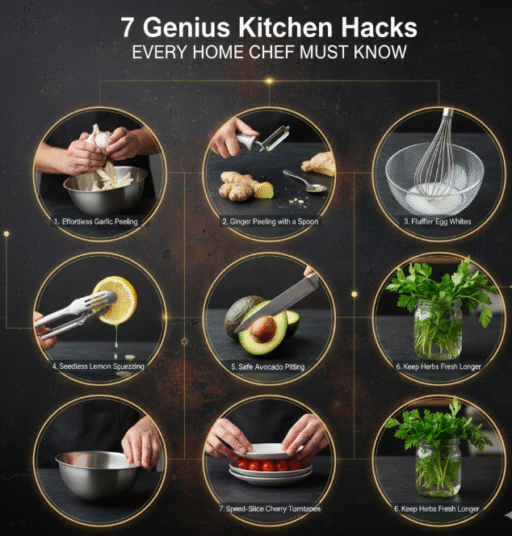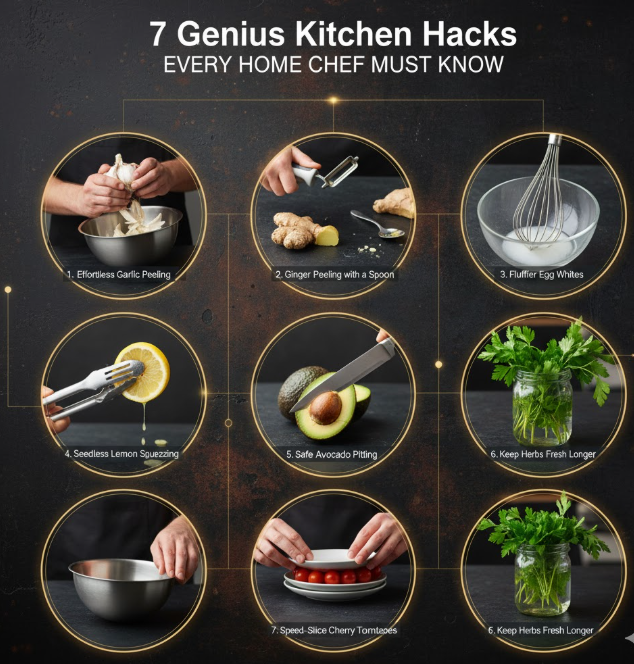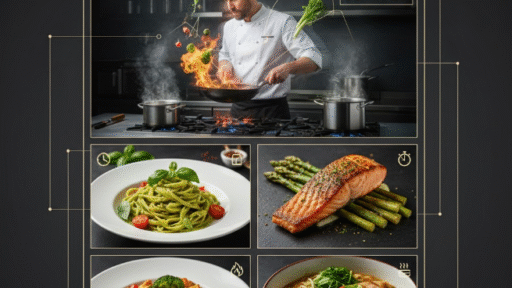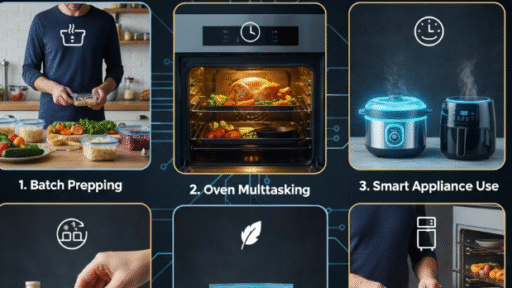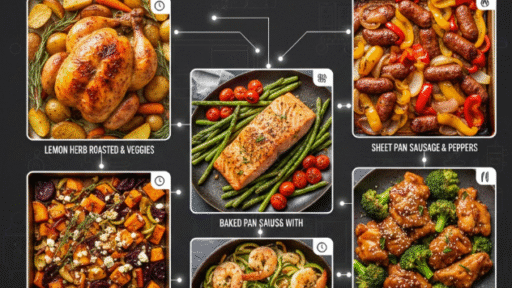The kitchen — where raw ingredients transform into magic, where families gather to make and share tradition. But let’s face it: Rounding up the meal can sometimes feel like a race against time, recalcitrant ingredients and inscrutable culinary challenges. Whether you’re burning some garlic for the third time this week or losing a fight with a particularly stubborn avocado, we’ve all had those moments.
Here’s the good news: You don’t have to be professionally trained or own fancy equipment to cook like a pro. You need shortcuts — not just to speed you along, but to help you achieve your ideal meal: one in which nothing goes to waste, and the act of making it is as fun as eating it. And these aren’t your grandmother’s tricks (though there’s wisdom in some of the timeless ones). They are battle-tested, modern kitchen hacks that actually work in real kitchens, with real ingredients for real people who just want to make great food without the head or heartache.
In this guide, we’re sharing seven genius kitchen hacks that will revolutionize your cooking experience. These tips will make you ask yourself how you ever had to cook without them: From saving an over-salted soup craving unsalvageable disaster; to keeping your herbs fresh for weeks. Time to take your kitchen skills next-level? Let’s jump right in.
Hack #1: The Ice Cube Tray Revolution – Saving Herbs and More
Fresh herbs are wonderful — until three days after you brought them home, they collapse into a wilted, slimy mess in your fridge. Sound familiar? Most home cooks have an issue with herb storage, resulting in useless expense and a trip to the grocery store every time a recipe requires fresh basil or cilantro.
The answer is surprisingly unpretentious: ice cube trays. This hack changes your game when it comes to storing and using fresh herbs — and not only works on so much more than you might expect.
Here’s how you do it: Finely chop your fresh herbs (parsley, cilantro, basil, thyme, rosemary—whatever you’ve got), then pile the chopped herbs in the cups or compartments of an ice cube tray and pour over just enough olive oil or butter to cover them. Freeze them until rock hard, pop them out and store in freezer bags. Now you have ready-to-go, pre-portioned herb cubes to toss into whatever you’re cooking.
Why does this work so well? The oil or butter protects the herbs from freezer damage, or burn, and retains their flavor. When you’re cooking, all you have to do is pluck a cube and plop it right into your hot pan. The herb-infused oil immediately melts giving off impressive fragrance and flavor your meat.
But wait — you can freeze even more in ice cube trays, too:
- Wine you have leftover: For deglazing pans, adding to sauces.
- Tomato paste: Running out of half a can no longer worth it
- Coconut milk: Excellent in curry dishes and smoothies.
- Coffee: Brew coffee ice cubes that won’t dilute your iced coffee
- Lemon or lime juice: Fresh taste of citrus whenever you want it
- Pesto: Readily available in small portions when you want them
- Stock or Broth: To enrich little dishes
This one hack solves food waste, saves money, and makes sure you always have flavor boosters at the ready. Future you will be grateful every time you unearth from your freezer exactly what you were hoping to cook.
Hack #2: The Wooden Spoon Trick – Say Goodbye to Boil-Overs Forever
Imagine this: You’re cooking up pasta, step away for 30 seconds and then — whammo, there’s an eruption of starchy water covering your stove top. You just made a gigantic mess that takes an eternity to clean up. We’ve all been there, and it is so exasperating.
Here’s a hack so easy that it feels like we’re pulling your leg: Lay a wooden spoon across the top of your boiling pot.
That’s it. Seriously.
As water boils, it becomes more active—bubbles form and rise to the surface. When those bubbles experience the impact of a wooden spoon, they pop. The bubbles are broken by the surface tension of the wood before they have time to spill. The spoon remains cool enough (unlike metal) that it won’t become very hot to touch, and works as a reliable bubble-buster while you’re whisking about on other cooking duties.
This is most effective with pots that are just beginning to boil over. If you’re dealing with a rolling boil that’s already boiling over, you will need to lower the heat first. But for just regular-ass cooking — pasta, rice, potatoes and vegetables — this trick is so clutch.
A few key notes: Reach for a wooden spoon, not metal (which becomes too hot) or plastic (which could melt). The spoon should stretch over the widest section of the pot. And keep in mind, this only buys you time, and doesn’t replace proper heat management — if your burner is still raring too high, you’ll have to turn it down.
This hack will save you from the struggle of watching those pots constantly and clean up days. It is small, simple — and surprisingly effective.
Hack #3: The Brown Sugar Softening Secret – Never Let Your Sugar Go Hard Again
It’s time to bake cookies, and when you pull out the brown sugar — there’s a brick. You attempt to loosen it with a fork, then a spoon, then it’s pretty much like working as an archaeologist. This is not how baking is supposed to be.
Brown sugar gets stiff because it is losing moisture. The molasses in brown sugar requires moisture in order for the brown sugar to remain pliable, and when it dries out (via evaporation), you end up with solid-as-rock brown bits. But here’s the genius hack: You can restore that moisture.
The Quick Method (5 minutes): Transfer your petrified brown sugar to a microwave-safe bowl. Wet (but not dripping) a paper towel and place it over the sugar. Microwave in 20-second intervals, stirring and checking each time. The steam from the paper towel will rehydrate the sugar and make it soft and ready to use.
The Overnight Method: If you’re not in a hurry, put a slice of bread or some apple slices in your container along with the brown sugar and seal it tight. By morning your sugar will be soft again. The sugar draws some of the bread’s juices (or those of the apple) without picking up its flavor.
An Ounce of Prevention: If you want to prevent hardening in the first place, store your brown sugar in an airtight container with something like a terra cotta brown sugar saver (a disc that you soak in water) or add moist ingredient like marshmallows. Yes, a marshmallow! It lends just enough moisture to leave the sugar soft for months.
Storage comparison:
| Storage Method | How Long Sugar Will Remain Soft | Cost | Ease of Use |
|---|---|---|---|
| Original bag (unsealed) | 1-2 weeks | Free | Easy |
| Airtight container only | 1-2 months | Low | Easy |
| With marshmallow | 3-4 months | Very low | Very easy |
| With terra cotta disk | 6+ months | Low | Easy |
| With bread slice | 2-3 days (must replace) | Very low | Moderate |
This hack saves you money (goodbye, rock-hard sugar you toss and replace), time (you don’t have to rush out for emergency sugar runs), frustration (so long, scraping!). Your baking tasks just became even less odious.
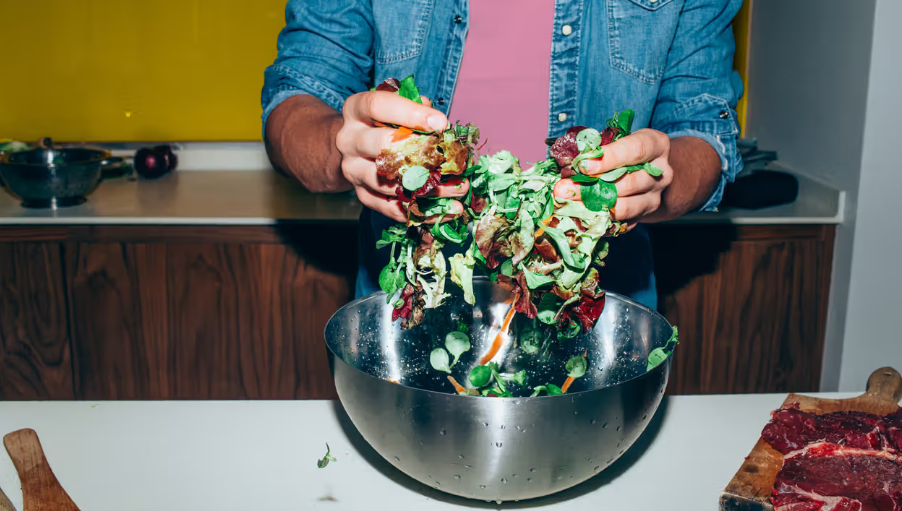
Hack #4: The Citrus Microwave Magic – Extract More Juice, Every Time
There’s nothing worse than attempting to juice a lemon or lime and only getting a few puny drops. Your hand hurts so much from all the squeezing, and you’re wondering if you should just give up and use bottled juice (which is never as good). There’s a better way.
Microwave citrus fruit for 15-20 seconds before you cut and squeeze it. That’s the entire hack. But the results are dramatic.
Here’s why it works: by heating the fruit, you break up membranes inside of it so that the juice is easier to extract. The heat also has the effect of softening and drawing out moisture from fruit. With half the exertion you’ll receive a lot more juice and it can be as much as double.
The Complete Technique:
- Roll the citrus fruit on your counter with strong pressure, before microwaving it. This begins to dissolve those membranes.
- Microwave for 15-20 seconds (that’s all it needs—it’s just warming, not cooking).
- Cut the fruit in half.
- While squeezing, pierce the skin with a fork—this squeezes out extra juice.
If, of course, you do not own a microwave, skip the zapping and squeeze the fruit into really tight rolls before dropping it into hot water for a few minutes. It doesn’t work quite as well, but it also does some work so fine.
Bonus citrus hacks:
- Freeze whole lemons and grate the entire fruit (pith and all) over dishes for a potent shot of lemon flavor
- Save squeezed lemon halves to clean and freshen your garbage disposal
- Lemon on cut avocado or apple to stop browning
- “Cook” fish with lemon juice in ceviche
- How to clean your microwave: Heat a bowl of water and lemon juice in your microwave for 3-5 minutes, then wipe the interior down.
This trick that will save you from tossing waste fruit and cash, and ensure you always have tangy FRESH citrus flavor in your recipes. Your cocktails, salad dressings and fish dishes will thank you.
Hack #5: The Salt Rescue Mission – How To Fix Over-Salted Food In A Flash
We’ve all been there: you’re seasoning your soup, you get a little heavy handed and the next thing you know, it tastes like the ocean. Your heart sinks. Did you just ruin dinner? Before you call it quits and order takeout, use these rescue tactics.
The Potato Trick: Toss in pieces of raw potato into your over-salted soup, stew, or sauce. Allow to simmer for 15-20 minutes, then remove them. Potatoes soak up extra salt as they cook, leaching it from your dish. It’s not a cure-all, but for liquid dishes it works surprisingly well.
The Dilution Method: You just make your recipe with more of the unsalted ingredients. More broth, more tomatoes, more coconut milk — whatever the base of your dish is. Yes, you’ll have extra food, but it’s better than throwing away what you cooked. Freeze any extra for a quick meal later on.
Balancing the Acid: What may sometimes comes off as “too salty” actually might be just unbalanced. Spice it up with a squeeze of lemon juice, vinegar or a touch of sugar. These two ingredients don’t remove the salt, but they help balance it so that your tastebuds won’t concentrate only on how salty something is.
The Dairy Save: If you’re dealing with a cream-based soup or sauce, add in more dairy (cream, milk or yogurt). Dairy is also a good way to mute saltiness.
The Bulk-Up Strategy: Eat more vegetables, grains or protein in your dish. More ingredients for the salt to be absorbed into means that it gets spread over more food, so its concentration is lower.
Prevention Tips:
- Salt slowly, tasting all the while
- Keep in mind that liquids will reduce as they cook, intensifying the salt — season lightly at first and again at the end
- If you’ve got lots of add-ins that are already salty (soy sauce, cheese, canned goods, olives), then go light on the salt.
- Use kosher or sea salt, not table salt – they are less strong-flavored and easier to control.
Quick reference guide:
| Issue | Better Solution | Science Behind It |
|---|---|---|
| Too much salt in soup | Chop up a potato or add water | Potato absorbs salt; water reduces concentration |
| Too much salt in sauce | Add something acidic (lemon/vinegar) or dairy | Balancing flavors, drawing away saltiness |
| Too much salt on meat | Serve with unsalted side | Spreading out the salty impact |
| Too much pickled disaster | Mixing adding more rice | Diluting The Salt Concentration |
It’s a move that can actually save dinner. You don’t have to trash that over-salted casserole, rice or sauce (and squander time and money) when fixing it is simply a matter of minutes.
Hack #6: The Garlic Shake – Easily Peel the Garlic in Seconds
Garlic peeling is one of those irritating kitchen activities that takes longer than it should and coats your fingers in garlic smell for hours. You’re picking off driblets of skin, it’s going under your fingernails, and pretty soon you’re wondering about life choices. There’s a much better way.
The Two-Bowl Shake Method: Tip out your garlic, broken into cloves (do not peel). Put the cloves in a metal or hard plastic bowl and cover them with another bowl of similar size to make an enclosed container. Now shake hard for 15-30 seconds—pretend you’re shaking up a cocktail. By the time you have opened this up, most of the peels will have released from the cloves, which are ready to use.
The shaking causes a collision that removes the papery skin from the cloves. It’s quick, it works (oddly well) and it’s a little bit hilarious.
Alternative Methods:
- The Microwave Method: Place the unpeeled garlic bulbs in the microwave and heat it for 15-20 seconds. The heat warms the cloves, making them warmer and easier to peel.
- The Flat Knife Method: Put a clove on your cutting board and set the flat side of a chef’s knife on top. Press down hard (but not that hard unless you want mashed garlic). The skin will crack and peel easily. Very nice to do when you have just a couple of cloves.
- The hot water method: Soak garlic cloves in hot water for 3-5 minutes. The peels should slip right off.
Bonus garlic hacks:
- Get garlic smell off your hands by rubbing them on stainless steel (let’s say, your sink or a spoon) under cold water
- Roast whole heads of garlic for sweet, creamy garlic paste
- Washed and peeled garlic cloves in olive oil can keep for a week refrigerated (for food safety only).
- Use a microplane to grate garlic for a more even distribution throughout your dishes
- Add garlic at various stages for varying flavors: early for mellow, late for punchy
These tricks will save you insane amounts of time, particularly when you’re cooking recipes that call for hefty servings of garlic. Your fingers remain clean, you work much faster, and you’re free to concentrate on actually cooking rather than engaging in mortal combat against tiny paper skins.
Hack #7: The Banana Ripening Station – Never Eat Over Ripe Bananas Again
Bananas have a maddening life cycle: They are green and hard for what feels like an eternity; they’re perfectly ripe for about six seconds, and then suddenly they are brown and mushy. You wish to eat them at the height of their ripeness, yet they never seem to align with your timing.
Here’s how to take control:
To Hasten Ripening: Put bananas in a brown paper bag with an apple or tomato. These fruits produce ethylene gas, which initiates the ripening process. Your bananas can be ready to eat much more quickly — usually within 24 hours, rather than days.
To Prevent Ripening: Wrap the banana bunch with plastic wrap or aluminum foil. Bananas emit ethylene gas from their stems, a hormone that accelerates ripening. This gas gets trapped when we wrap the stems, and the process is slowed down enabled you to get several extra days of perfect bananas.
To Freeze for Later: Have a bunch of bananas getting overripe? Peel and break into chunks and freeze in freezer bags. Frozen bananas are great for smoothies, nice cream (frozen banana whizzed up until creamy — it’s like ice cream) and baking. They will last in your freezer for months.
Revive Cut Banana Slices: Sprinkle cut sides of banana slices with lemon juice or vinegar. The acid is also an inhibitor of oxidation (browning). This is perfect for packing in lunch boxes.
The Quick Reference Guide:
| Your Situation | What To Do | Expected Result |
|---|---|---|
| Bananas too green | Paper bag with apple | 24-48 hours |
| Bananas getting ripe too fast | Wrap stems in plastic | Extra 3-5 days |
| Old, overripe bananas | Peel and freeze | 3-4 months |
| Cut banana shading brown | Brush with lemon juice | Hours fresh-looking |
| Want to divide the bunch | Wrap each stem separate | Each at its own speed |
When you understand how bananas ripen, it helps to reduce the fruit you waste, allows you to always have ripe bananas at your finger tips (even more so if you freeze them as well!), and can save a whole lotta cash not having to keep replacing those brown bananas!
Bringing It All Together: Your New Kitchen Routine
While none of these seven hacks are particularly complicated on their own, when used all together they add up to a whole new way of cooking that is much more intelligent and efficient — not to mention less stressful. You’re not learning just tricks but a problem-solving mind-set that makes you a better cook, a more confident one.
So, start by picking one or two of these hacks to try this week. Freeze some herbs in an ice cube tray and maybe give the wooden spoon hack a go. Once those become habits, add some more. These brilliant hacks will quickly become second nature with this knowledge, and soon you’ll pass them on to amazed friends wondering how you make the kitchen seem so easy.
The most accomplished home cooks have not necessarily trained or are not working as professionals, nor do they need fancy equipment. They’re the ones who cook intelligently, trouble-shoot artfully and continue to learn. With these hacks up your sleeve, you’re that much closer to being that chef.
And remember: Cooking should be fun, not stressful. These are the hacks that take out the annoyances and ensure you spend way, way more time of creating awesome food that everyone loves. Now go out there and try out these genius hacks. It’s about to be a great week in your kitchen.
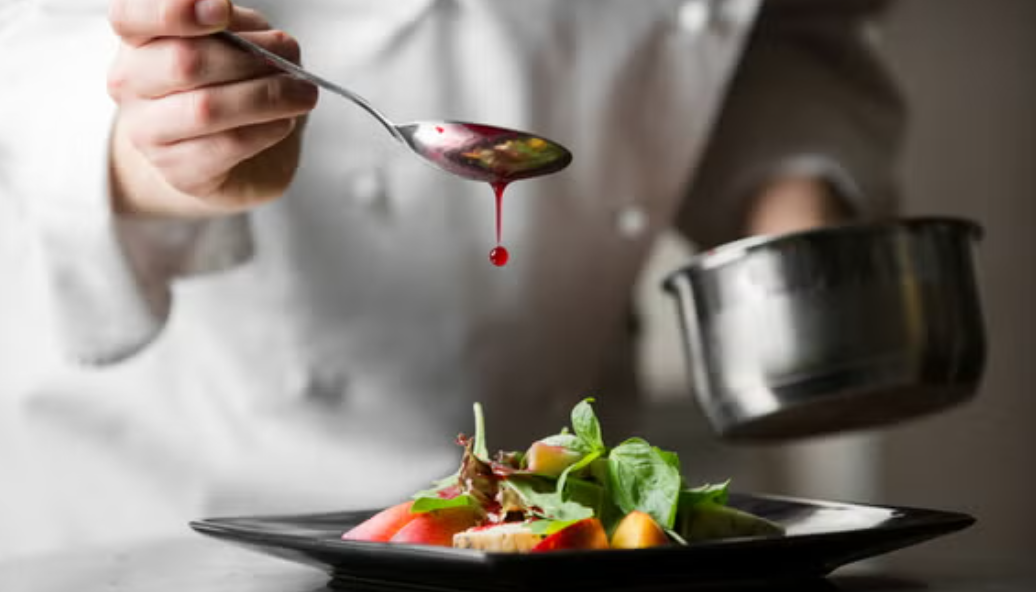
Frequently Asked Questions
Can I employ a plastic ice cube tray for the herb-freezing hack?
Yes, you can use plastic trays too but silicone are a bit easier because you can pop them out of the frozen cube more easily. Whatever you opt for, just make sure it’s freezer-safe. Stay away from a tray with any cracks or damage as the oil may spill.
Does the wooden spoon work on big and small pots?
It runs best on medium to large pots. The spoon may not perfectly cover the opening of very small pots. The key is that the spoon should rest snugly across the rim in a position to break bubbles as they ascend.
How long does brown sugar last after you have used the softening hack?
Once it’s softened, your brown sugar will stay soft as long as you store it correctly. Store in an airtight container with a moisture source (you can use a marshmallow or terra cotta disk) and it will remain soft for months. It will reharden in a matter of weeks, if you don’t store it properly.
When microwaving citrus, does the hot fruit generate less vitamin C than if it had been cooked or heated by another method?
The quick 15-20 seconds of nuking fruits doesn’t destroy much vitamin C. The object is heat the fruit, not cook it. The loss is relatively small compared to the advantage of getting more juice and more total nutrients.
But what if the potato trick gives my soup a potato flavor?
This is rarely an issue because you’re taking the potatoes out of the brine once they’ve absorbed some salt. If you’re concerned, use chunks instead of small pieces and don’t let them cook too much — 15 to 20 minutes is all you need. The potatoes aren’t going to break down enough to flavor your dish in that amount of time.
Can I do the garlic shake with only a few cloves?
It also works better with a minimum of 6-8 cloves to get enough volume to make an impact when you shake it up. For just 1-2 cloves, the flat knife technique is quicker and more efficient.
Why don’t my bananas ripen — even in a paper bag?
If bananas are harvested too green, they may fail to ripen. When you buy them, be sure your bananas have at least some yellow. Also, keep them at room temperature — cold drastically slows ripening. If not, add a riper banana, apple or tomato to the bag, containing more ethylene gas.
What foods should I not freeze in ice cube trays?
Do not freeze any sauces that are dairy based (they can separate) or raw eggs in the shell (they expand and they crack), as well as carbonated liquids. Almost all herbs, stocks, juices and purées freeze brilliantly. Be sure to label your cubes so you know what is what!

